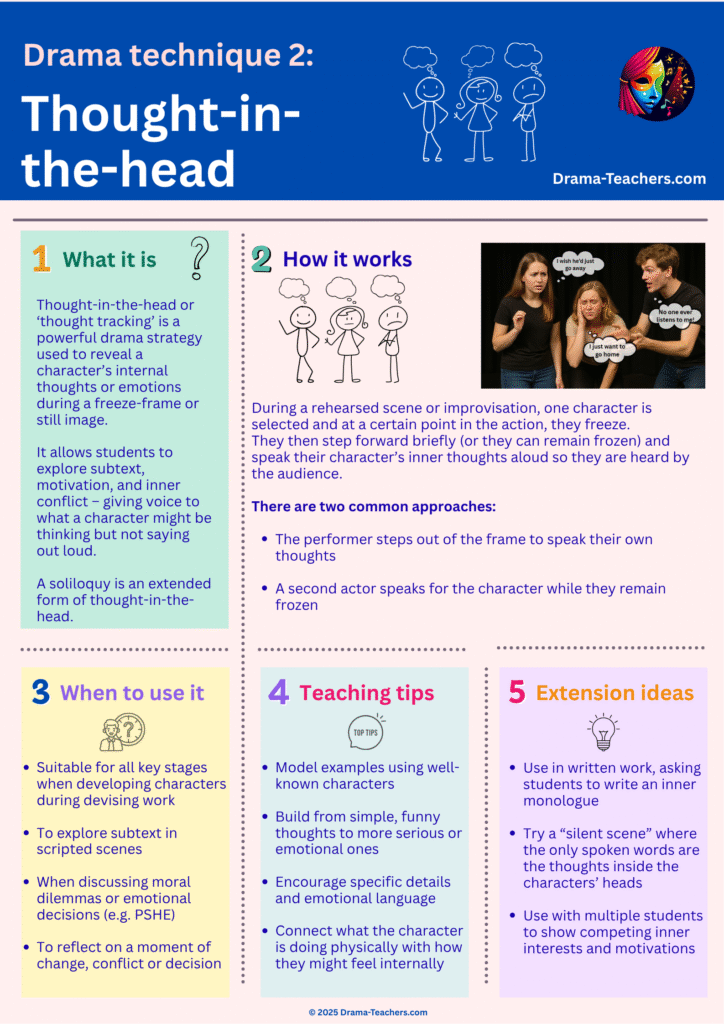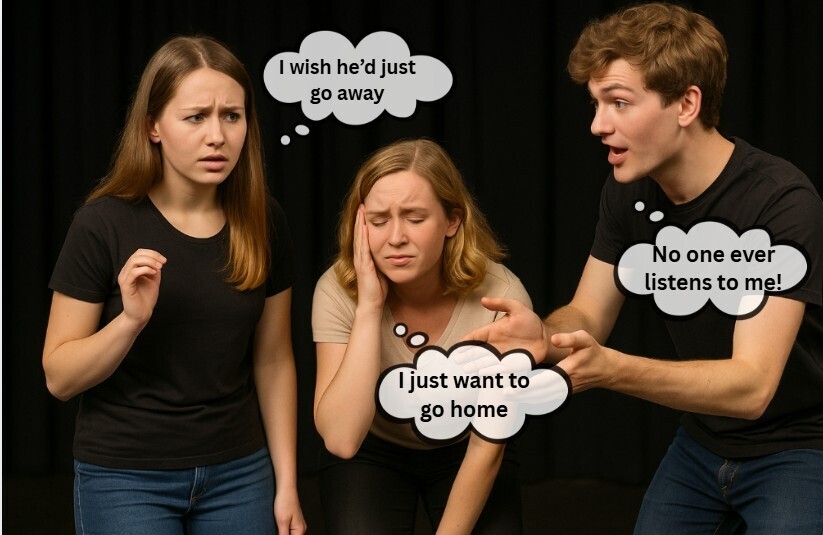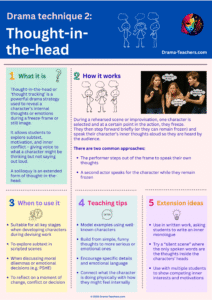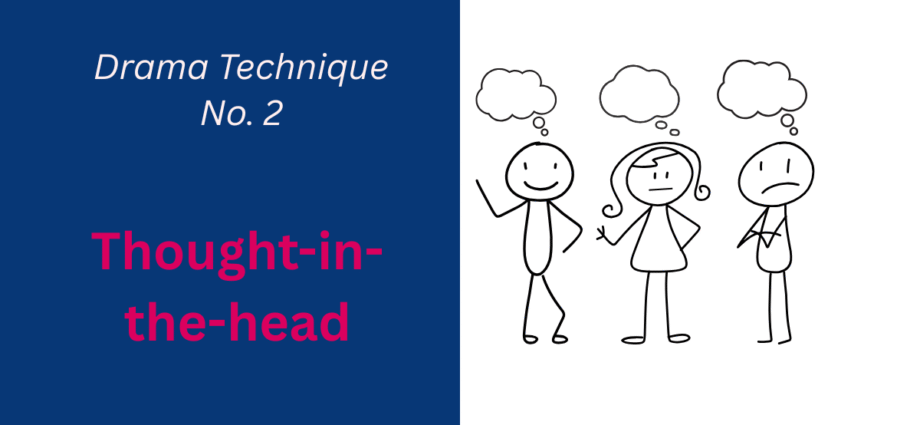Thought-in-the-head is a powerful drama technique that gives voice to a character’s inner world. It helps students explore emotion, motivation, and subtext by revealing what a character is really thinking – not just what they say or do.
From devised scenes and scripted work to explorations of PSHE themes, this strategy supports empathy, creativity, and a deeper understanding of character. It’s simple to teach, yet offers rich opportunities for thoughtful and impactful performance.

What it is
Thought-in-the-head (also known as thought-tracking) is a simple but powerful technique used to reveal a character’s inner thoughts. It gives the audience insight into what the character is really thinking – which may be very different from what they’re saying or doing.

How it works
A scene is paused or broken, and one or more characters step out of the action to speak their inner thoughts aloud. This can be done with the actor stepping forward or simply freezing while their inner voice is spoken. Sometimes another actor voices the thoughts on their behalf, and this can be used to give actors a better understanding of the subtext for their own and other characters.
When to use it
You can use the technique of thought-in-the-head from KS2 right up to KS5. It’s usually a great way to develop freeze frames or still images, and an extension or add-on, and it helps students start thinking about how their character might think rather than what they think.
It can be used to:
- To explore subtext and motivation
- To add emotional depth to characters
- During improvisations or rehearsals, to help develop character understanding
- In performances, to engage the audience with the character’s inner world (e.g. a soliloquy)
- When exploring moments of indecision, conflict, or heightened emotion
Teaching tips
- Start with a simple freeze-frame and ask students to say one sentence that their character is thinking
- Encourage honesty, vulnerability, and specific detail – not just vague emotions like “I’m sad”
- Try it in groups: watch a scene and ‘tap in’ to different characters to hear their thoughts
- Use it to contrast what is said vs. what is felt. This builds stronger storytelling
- Add a layer of movement or music to heighten emotional moments
Use the technique several times during an improvisation by clapping your hands and getting the students to freeze. This helps them become more aware of their character’s emotional journey over the course of the scene.
Extension ideas
There are many ways to extend the use of thought-in-the-head, so use some of the ideas below to vary how you use this technique in the classroom.
- Use in written drama work: students can write inner monologues to go with performance scenes
- Try a “silent scene” where the only spoken words are the thoughts inside the characters’ heads
- Combine with conscience alley or hot-seating to develop understanding
- Use for devising work to deepen the emotional complexity of student-created characters
Want to keep a copy for your planning or classroom wall?
Download our FREE printable: Drama Techniques 2: Thought-in-the-head

Includes an overview, how-to steps, teaching tips and extension ideas – all in one colourful A4 resource.
Other techniques you might like:
Drama techniques 1: Freeze frame


